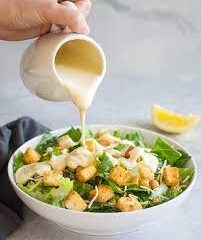Triple Crown Lite; When Marketing Wags the Dog
One observation that I’ve often made for the benefit of owners is that even a good feed will offer poor results if used incorrectly. In the case of Triple Crown Lite the company is instructing you to use the feed incorrectly.
The reason is simple; someone in marketing had a sleepless night and came up with the idea of coming up with a unique feed that no other feed company has. Unfortunately there are some good reasons why no other feed company has a product like Triple Crown Lite.
I will explain.
Triple Crown is a Marketing Driven Company
TC has managed to convince a rather large segment of the horse feed market that it designs and produces the absolute pinnacle of horse feeds anywhere in the world. Many people are convinced that the company does its own extensive research using its own team of nutritionists in its own lab.
To be fair Triple Crown never makes any of these claims but people believe it to be true. Now that’s some pretty talented marketing!
Most TC customers also believe that their feeds are “grain free”. Read it again, the bag says “WHOLE grain free” and there’s a big difference. The feeds contain wheat middlings, dried distillers grain (corn) and rice bran. None of these are bad ingredients, in fact they’re pretty good ingredients for horses but they are indeed “grains”.
The truth is that Triple Crown has fewer than 15 employees, does no in house in vivo (live horses) research and does not mill its own products. The feed was produced under contract by Southern States for many years until 2017 when SS was acquired by Cargill. Contract negotiations broke down and Triple Crown contracted with Purina MIlls to produce their feed. Recently several other companies have been tapped to mill their feeds including Blue Seal.
When I was in the field working for a Purina dealer I would be highly amused by the TC customers who “would never think of feeding the junk from Purina to my horse!”. Informing them that their precious feed was produced in the same mills by the same people on the same lines using the same ingredients as “the junk from Purina” usually didn’t make a dent in their misplaced ardor for Triple Crown.
Now, before I am attacked by a horde of middle aged women trying to pluck out my eyes I have to say that there is nothing wrong with Triple Crown feeds. They are mostly decent formulations that offer good results. While their feeds are good they certainly have no basis to claim through statement or innuendo that they are the “best”. Many other feeds offer the same or even better performance.
The best example of their marketing is the highlight of the landing page of their website. The “Feed Comparison Tool” leads you to believe that when you enter the competitive brand that the tool will do a comparison of the performance of the feed based on nutrients, energy, etc. Alas, this is not the case. Instead the tool checks off the boxes of all the stuff included in Triple Crown feeds that their competitors don’t have. The problem is that all of those boxes are unnecessary ingredients used for tag dressing.
But What About Triple Crown Lite?
This feed is marketed as a feed specifically for weight control and low NSC for metabolic horses. That’s fine except the formulation doesn’t really support either of those claims as the guaranteed analysis clearly shows.
Commercial horse feeds are assigned to one of three categories:
Ration balancers are designed to offer full nutrition supplementation to an all forage diet in a concentrated form with a low feed rate offering few calories to the diet. Ration balancer is frequently used for overweight and or metabolic horses.
Typically ration balancers are fed at a minimum rate of 1 pound per day for a 1,000 pound horse.
Concentrated feeds are used to provide nutritional supplementation to horses that have a primarily forage diet but require additional calories and fat because of workload or condition. Some of the leaner athletic breeds require concentrated feeds to offer a calorie dense source of energy.
Concentrated feeds have a minimum daily feed rate of between 3.5 and 4 pounds per day.
Complete feeds are designed to replace some, most or all of a horse’s forage. They are typically high in fiber but low in calories and nutrient density in order to emulate very high quality forage.
Complete feeds have a minimum daily feed rate of 6 pounds per day and may be fed up to 15 pounds per day for a 1,000 pound horse.
To learn more about the three types of commercial horse feed follow this link
https://jimthefeedguy.com/the-three-types-of-commercial-horse-feeds/: Triple Crown Lite; When Marketing Wags the DogTriple Crown Lite is in a Category of its Own Creation
Let’s forget about complete feeds for this conversation since Triple Crown Lite is clearly not in that category.
Triple Crown presents Lite as a low calorie, low starch feed for obese or metabolic horses. Great! Wait! Isn’t that the role of the ration balancer?
Yes, but Triple Crown isn’t fortified as a ration balancer having protein, lysine and fat specifications more aligned with a concentrated feed.
EXCEPT that the vitamins and minerals are more in line with a ration balancer.
This imbalance is the problem with Triple Crown Lite and here’s why.
The feed rate calls for a minimum rate of 2 pounds per day for a 1,000 pound horse but sets a maximum daily limit of 5 pounds due to the density of the micronutrients. Feeding in excess of 5 pounds per day may produce toxicosis in some horses.
Remember the whole reason for using Triple Crown Lite is to help your chubby horse lose weight, right? After all the name says it all, Lite. For humans looking to feel good about losing weight we have Lite beers, Lite salad dressings, Lite pizza rolls. Lite = let’s lose weight.
If I feed the minimum feed rate of 2 pounds per day I still haven’t provided enough of the important nutrients like lysine that your horse would get from 1 pound of balancer.
It requires 2.5 pounds of Triple Crown Lite to equal the protein and lysine in Purina Enrich. Triple Crown states that Lite contains 1,150 kilocalories per pound for a total of 2,875 kilocalories per day.
Enrich contains 1,500 kilocalories most of which are derived from protein. I’m not sure where the “scientists” at Triple Crown learned math but 1,500 is a great deal lower than 2,875.
So if the goal for your horse is weight loss you’re much better off with a ration balancer.
If you’re feeding Triple Crown Lite for weight loss at only a pound per day your horse is being shorted significantly on protein and lysine.
The feed isn’t much good as a concentrated feed either because it’s not very calorie dense at 1,150 coupled with a 5 pound per day max feeding limit. The overabundance of trace minerals makes the feed concerning if not dangerous to feed at higher rates.
All of this combines to make Triple Crown Lite an easily misunderstood and therefore misapplied feed. In short, it is really easy to underfeed or overfeed.
Why does Triple Crown Produce Lite?
Simple. Because marketing feels that it is a “unique” product that fills a spot left empty by other feed companies.
It’s just my opinion but I feel that the reason the other feed companies don’t have a feed to fill this “empty spot” is because there isn’t one and they are more concerned with offering owners feeds designed to meet the needs of their horses and not just to one up the competition.
If you have a chubby horse use the Triple Crown 30% balancer and call it a day because if you use Lite you will either be feeding too many calories or not enough nutrition.
If you found this article helpful consider buying me a Negroni at

